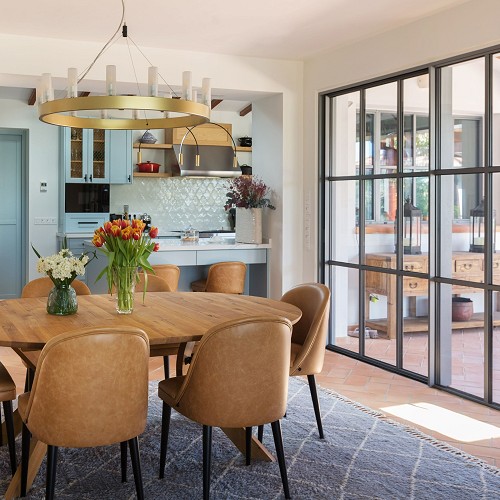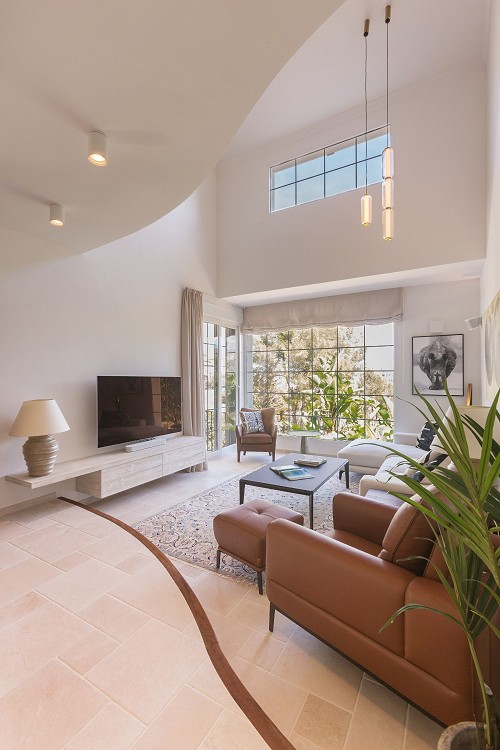
10 Key Questions to Transform Your Home into the Modern and Personalized Space You’ve Always Dreamed Of – (Part 2)
In the first part of this blog, we covered five fundamental questions you should ask yourself before starting your home transformation. From defining the purpose of the renovation to choosing a style that matches your personality, every decision impacts the result.
Now, we continue with the second part, where we explore other essential aspects to ensure successful renovation with simplicity and comfort. These points will help you maximize your home's potential in Jávea and across the Costa Blanca, ensuring functionality, aesthetics, and comfort.
- What structural aspects of the house should be reviewed?
Renovations are not just about aesthetics; they may also require structural adjustments to ensure your home's safety and functionality. Before starting any work, a technical assessment is recommended to detect hidden problems that could affect the project. At our architecture and interior design studio, HoffmannWehr, we specialize in evaluating these aspects to ensure every renovation—whether a complete or partial remodel—is carried out with maximum safety and efficiency.
Key elements to consider:
- Load-bearing walls: If you plan to remove or modify walls, it's crucial to identify which are structural to avoid compromising the building's stability. In some cases, reinforcement beams may be needed.
- Electrical installations: An old or faulty electrical system can be a safety hazard. If you plan to add more outlets, LED lighting, or smart systems, the electrical network must be adapted to meet new demands.
- Pipes and plumbing: If your home is over 20 years old, it’s advisable to check the water pipes and drains to prevent future leaks or pressure issues. A solid, problem-free infrastructure is key to a stress-free living environment.
- Ventilation systems: Especially in bathrooms and kitchens, poor ventilation can cause humidity and mold. Make sure to have proper natural or mechanical ventilation systems. Windows and installed ventilation systems are good options.
- Thermal and acoustic insulation: Improving insulation with suitable materials will reduce energy consumption and enhance home comfort. It will also help you live and rest in peace without being affected by surrounding noise.
Conducting a preliminary study will help anticipate structural problems and plan solutions without affecting the project's progress.
- What level of natural and artificial lighting do you need?
Lighting plays a fundamental role in the perception and functionality of spaces. A well-lit home can feel more spacious, welcoming, and comfortable.
Before starting the renovation, observe how natural light enters each room and define the type of artificial lighting needed. You might want dimmable lights in some areas and spotlights in others. A good combination of natural and artificial light will make your home more inviting and functional.
Natural light:
- Use light-colored walls and furniture to reflect natural light better.
- If possible, install larger windows or skylights to increase light entry.
- Use sheer curtains or adjustable blinds to control the amount of light without blocking it completely.
Artificial light:
- General lighting: Should be uniform and sufficient to ensure visibility throughout the space.
- Task lighting: Table lamps, LED lights in furniture, or directional spotlights can highlight specific areas.
- Ambient lighting: Dimmable lights, LED strips, and decorative lamps add warmth and personality.
- Energy efficiency: Opt for low-energy LED bulbs and smart lighting systems to control lighting efficiently.
A balance between natural and artificial light will make each space functional at any time of the day and adapt to your needs.
- What materials and finishes are ideal for you?
The choice of materials and finishes defines the aesthetics, durability, and maintenance of your home. At our architecture and interior design studio, we prioritize materials that bring warmth and functionality to each space, combining modern trends with our clients’ needs. This is one of the most personal and visible decisions in any renovation, so go for it! And with professional advice, you won’t go wrong.
Key considerations:
- Durability and maintenance: Materials like marble or natural wood require specific care, while options like porcelain or laminate are more resistant and easier to clean.
- Aesthetics and style: Choose materials that reflect your personality and harmonize with the rest of the decor.
- Sustainability: Opt for eco-friendly materials like certified wood, non-toxic paints, or recycled surfaces.
Popular combinations include:
- Wood + natural stone: Brings warmth with a rustic or Scandinavian touch.
- Glass + metal: Ideal for modern and industrial styles.
- Microcement + wood: Perfect for contemporary and minimalist spaces.
Each material contributes to the identity of your home, so choosing wisely ensures the design remains timeless and makes you feel at home.
- How will you optimize storage solutions?
Storage is one of the most common needs—there's never enough! That’s why we must consider smart solutions integrated into the design to maintain a balance between aesthetics and functionality.
Some solutions we propose in our projects include:
- Multifunctional furniture: Sofas with storage, beds with built-in drawers, or extendable tables optimize space.
- Built-in wardrobes: Utilize every available inch and can be custom-designed.
- Modular shelving: Allows for reorganization as future needs change.
- Hidden storage: Drawers under stairs, compartments in walls, or vertical storage behind doors.
Each solution should adapt to your needs and home size, ensuring an efficient and stylish space.
- What personal details can make your renovation unique?
Details make the difference between a house and a home. These are the elements that truly make your home unique, adding character and authenticity.
Perhaps you want an exposed brick wall in the living room, a reading nook by the window, or a kitchen island for family gatherings. These special touches make the space feel truly yours.
Ideas to personalize your home:
- Statement walls: Textured paint, bold wallpaper, or wood or exposed brick paneling can transform a space.
- Special areas: A cozy reading corner, an artistic workspace, or a yoga/remote work area.
- Handcrafted or custom elements: Bespoke furniture, artwork, unique textiles, vintage decor, or travel souvenirs.
- Nature connection: Indoor gardens, plant-filled terraces, or natural materials enhance well-being.
- Smart home technology: Intelligent lighting systems, automated blinds, or virtual assistants make daily life easier.
Your home should reflect who you are and how you love to live. Incorporating these details will ensure the final result is uniquely yours.




